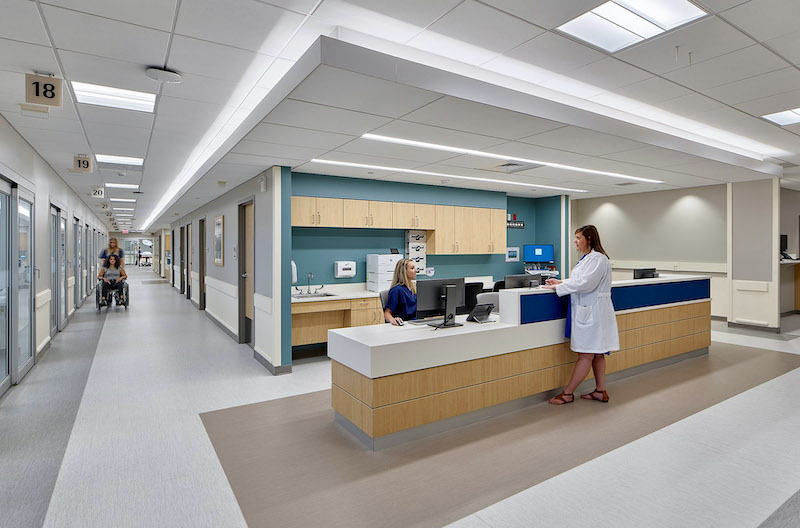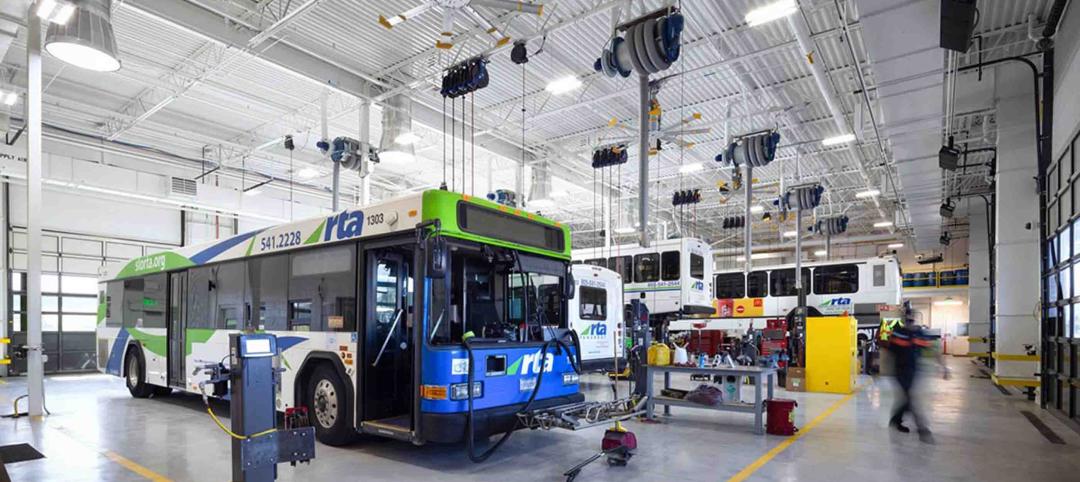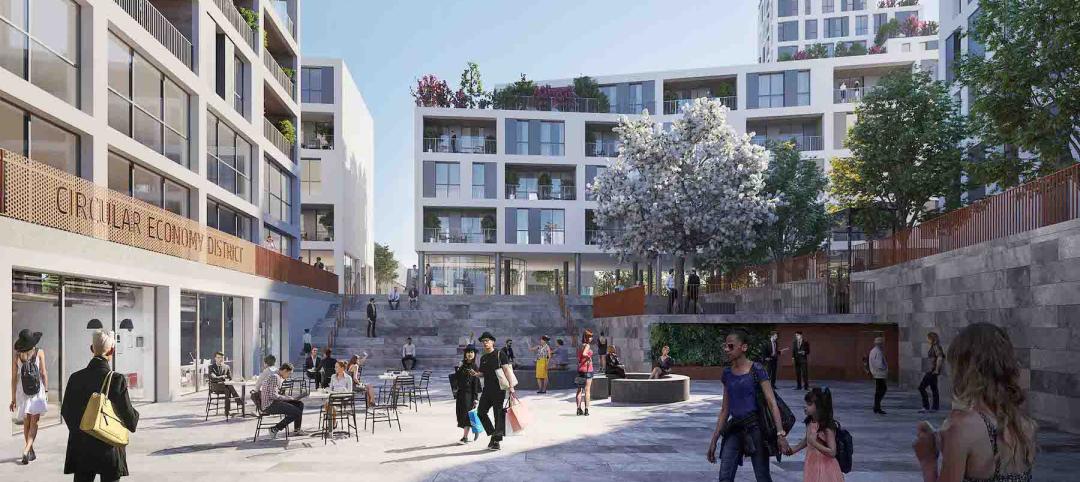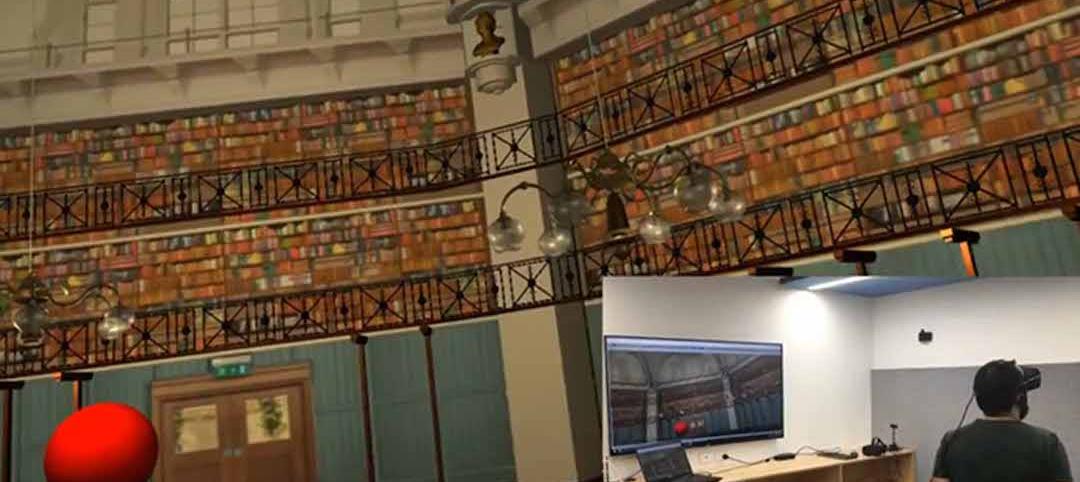I spend much of my life thinking about hospital design. And these days, with the outbreak of novel coronavirus (COVID-19), I’m sure many people around the world are looking at their hospitals in new ways, as patients and staff try to stay healthy. COVID-19, declared a pandemic by the World Health Organization (WHO), has brought hospital design and infection control to the forefront.
My colleagues and I are currently looking at pandemic management best practices from around the globe, such as the approaches Singapore implemented after the SARS (Severe Acute Respiratory Syndrome) epidemic in 2003. Strategies from countries like Singapore can be used—and some practices already have—in North American and European hospitals. What we’re learning is that we should be looking at several specific approaches now and moving forward, to help ensure that we are planning for and able to manage current and future health crises.
In Canada, there have been significant strides toward building preparedness into our hospital designs since the SARS outbreak hit Toronto. A key element of preparedness is the ability for hospitals to retrofit or reallocate parts of their facilities, accommodating worse-case scenarios such as a serious outbreak. Here are four ways that hospitals can act now to alter their buildings for pandemic response.
1. Including separate emergency entrances for contagious patients
One of the biggest risks of an infection infiltrating a hospital system occurs when people walk in but don’t realize they’re sick. At the point of entry, healthcare staff need to be able to screen people.
Conventional: Normally, patients can find the emergency department by walking in the hospital’s front doors or the emergency entrance. But if someone is feeling symptoms of COVID-19 and they arrive at the main entrance and wander around the hospital first—perhaps looking at a map of the hospital or buying a coffee—they could be coughing or touching numerous surfaces, leaving a trail of infection in their wake.
Pandemic response: Separate the emergency entrance, so people with COVID-19 symptoms stay away from the main doors. You don’t want patients who are visiting the hospital for other issues—such as broken bones, or other non-contagious injuries or issues—sharing the same space with patients exhibiting COVID-19 symptoms. Having a separated emergency entrance for contagious patients, particularly those with fevers, enables hospitals to stream patients there first for screening before entering other areas of the hospital. Hospitals can also incorporate another entrance with negative-pressure isolation rooms at emergency for patient transfers, where an undiagnosed patient who may be infectious is contained before moving further into the hospital environment. This enables hospital staff to diagnose and then, if necessary, prepare the path to a negative-pressure isolation room.
2. Transforming hospital lobbies—as well as other external spaces—for patient prescreening
Existing large spaces can be valuable in a pandemic scenario. Large main lobbies are sometimes criticized as a luxury, but in a pandemic, they can be converted into mass screening triage areas. External spaces—like parking areas—can also be used for prescreening but should be considered a last resort.
Conventional: Typically, a hospital lobby welcomes visitors while offering retail and providing wayfinding assistance. The lobby may also serve an important community function, where it resembles a town square and provides a space for residents to meet and interact.
Pandemic response: By adapting a lobby for mass screening, it can relieve the stress imposed on the Emergency Department so that the department doesn’t become overwhelmed. Newer hospitals will likely have lobbies with electrical and IT services support. As a secondary option, a hospital parking lot—or potentially a parking structure adjacent to the hospital—can provide opportunities for prescreening. This way, healthcare staff can ensure patients are going to the right place and not adding to cross-contamination. Ideally, an internal space like a lobby is a better option, so healthcare teams don’t have to deal with outdoor conditions, especially during the winter in many North America cities.
A hospital lobby can be used for mass-screening in a pandemic scenario.
3. Controlled separation between patients, visitors, and staff, based upon specific illnesses and their related level of contagion
With screening at hospital entries in place, it’s key to be able to manage “on stage” public access to each department while maintaining separate “off stage” service flows necessary—e.g., the “behind-the-scenes” areas of the hospital—for continued operations.
Conventional: Usually, it’s desirable to offer public access to most departments.
Pandemic response: When dealing with a pandemic, it’s important for healthcare professionals to manage who comes into a given area. Staff members need to have the ability to keep visitors and other patients away from specific areas. If possible, public access should be restricted. At this point, the Public Health Agency of Canada advises healthcare professionals to limit the number of visitors to those who are essential (such as an immediate family member or parent, guardian, or primary caregiver), and limit their movement within the hospital by only visiting the patient directly.
Can your inpatient room be converted into an isolation zone?
4. Providing the ability to convert existing hospital spaces—during a pandemic—into patient treatment spaces
Healthcare staff know that inpatient units and rooms are designed to contain and control infections. But in a pandemic situation, modifications may need to be made.
Conventional: Staff will have access to Airborne Isolation Rooms (AIR)—which contain vestibules and filtered air to eliminate transfer contamination through the hospital—for patients. And even in regular patient rooms, underlying engineering systems should be designed to maintain the room at negative pressure to the adjacent corridor. This supports infection control so that germs from one infectious patient are not “blown out” to the rest of the unit.
Pandemic response: If only a portion of the rooms on a floor are AIR, in the case of a pandemic, staff should have the ability to convert regular patient rooms—or even a whole unit, if needed—into an isolation zone. Ontario’s Ministry of Health recommends the use of an AIR, with negative pressure validated daily, but acknowledges that a single room—with the door closed—can also be used if necessary. The Public Health Agency of Canada advises that a patient with COVID-19 symptoms should be cared for in a single room with a private toilet and sink for designated patient use. The Agency recommends that infection prevention and control signage should be placed at the room entrance.
The ability to adapt
My teams and I try to design healthcare buildings that can be adapted. In a situation like we’re currently in, it’s important for hospital staff to be able to modify facets of their building to quickly respond. Resiliency is a key word here—hospitals need to be resilient, with the ability to pivot or change their functionality to respond to situations as they come up.
In the end, hospitals need to service the people of a community on good days and bad days, in typical situations and during worst-case scenarios. Hospitals must function for multiple uses and be able to react to a variety of circumstances.
I’m impressed with the way Canadian healthcare facilities have managed COVID-19 so far, and I’m intrigued to see how healthcare teams around the globe share best practices on preparedness as we face this pandemic and learn from one another.
More from Author
Stantec | Apr 18, 2024
The next destination: Passive design airports
Today, we can design airports that are climate resilient, durable, long-lasting, and healthy for occupants—we can design airports using Passive House standards.
Stantec | Mar 18, 2024
A modular construction solution to the mental healthcare crisis
Maria Ionescu, Senior Medical Planner, Stantec, shares a tested solution for the overburdened emergency department: Modular hub-and-spoke design.
Stantec | Nov 20, 2023
8 strategies for multifamily passive house design projects
Stantec's Brett Lambert, Principal of Architecture and Passive House Certified Consultant, uses the Northland Newton Development project to guide designers with eight tips for designing multifamily passive house projects.
Stantec | Apr 10, 2023
Implementing human-centric design in operations and maintenance facilities
Stantec's Ryan Odell suggests using the human experience to advance OMSF design that puts a focus on wellness and efficiency.
Stantec | Jul 6, 2022
5 approaches to a net zero strategy that communities can start right now
Whether your community has started on a plan or is still considering net zero, now is the time for all of us to start seriously addressing climate change.
Stantec | Feb 14, 2022
5 steps to remake suburbs into green communities where people want to live, work, and play
Stantec's John Bachmann offers proven tactic for retrofitting communities for success in the post-COVID era.
Stantec | Feb 8, 2022
How gaming technology is changing the way we design for acoustics
Adding 3D sound from gaming engines to VR allows designers to represent accurate acoustic conditions to clients during design.
Stantec | Dec 15, 2021
EV is the bridge to transit’s AV revolution—and now is the time to start building it
Thinking holistically about a technology-enabled customer experience will make transit a mode of choice for more people.
Stantec | Sep 3, 2021
Passports to a net-zero carbon future
How materials passports can help designers achieve social value and net-zero carbon.
Stantec | Aug 25, 2021
The mall of the future: Less retail, more content
For the mall to survive, it will need to embrace nontraditional uses and “messy vitality.” Here’s how to do it.
















